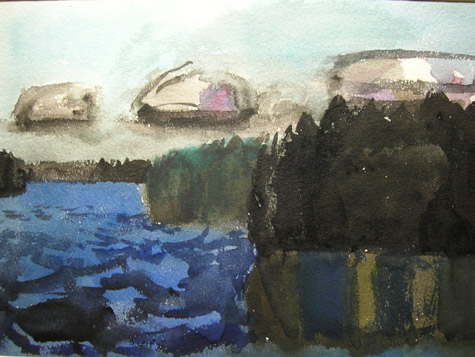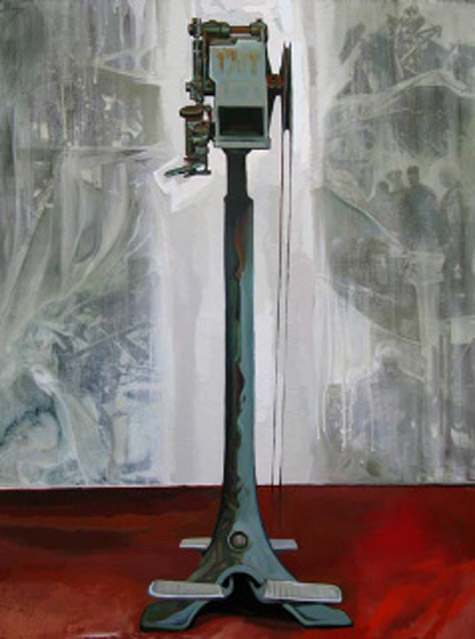
FOLKSY Leif’s Peninsula, Belgrade Lake. |
This year marks the 25th anniversary of Bert Gallery, which Catherine Little Bert and her father-in-law Hugo Bert (who'd run Cottage Gallery in North Providence) opened in the Biltmore Hotel in downtown Providence in 1985.
"I was always interested in telling the cultural history of the state and the city, and looking at the artists who set up the foundation of the art community here," Catherine Bert tells me. "So much of the story had been lost. I'd discover these artists who were really important in American art in general and it was hard to believe no one in the community knew about them . . .The narrative gets lost very easily if you don't document it and keep it together."
She took over as sole proprietor in 1992 and moved the gallery to its present location at 540 South Water Street. Its longevity is impressive in a city that struggles to support galleries. "There's just not enough population to support a commercial gallery in Providence," Bert says. From the start, a key to the gallery's viability was reaching outside the region for clients. "Maybe it was just dumb luck, but we opened in the Biltmore and got access to people coming from out of town," Bert notes.
The gallery's historical bent is apparent in its exhibit "In Their Own Way: Vintage Watercolors by Rhode Island Artists (1890-1960)" (through February 12). The works range from Sydney Burleigh's Woman and Child (1878), depicting a woman holding a kid in a grassy French forest, to Florence Leif's Peninsula, Belgrade Lake (1960s), depicting dense dark evergreens surrounding a choppy blue lake under gray brick clouds. Burleigh's style recalls Winslow Homer's post-Civil War paintings of farmhands and classrooms and kids playing along beaches, but Burleigh doesn't have Homer's snap. Leif's bold choppy strokes might bring to mind Marsden Hartley's late folksy roughhewn paintings of Maine.

A HEROIC AIR Hodge’s Monument to 1915, 2. |
The show includes late 19th-century paintings of docked ships by S. Roscoe Chaffee and Abigail Cooke. Mabel Woodward sharply observes the sunlight falling through a trellis in her 1920s painting Arborway. James Drummond Herbert's Pink Clown (1947) feels like a loose, speedy portrait of a white-faced clown in a baggy pink suit in the vein of, say, George Luks's early 20th-century paintings.
The best work in the show is H.A. Dyer's Mountain Scene in Blue, Lake Thune (1924), showing snowy mountains, all misty purple and blue, reflecting in a cold lake. He paints only the essential details to emphasize the harmonies of sweet blues.
Other standouts include Frank Mathewson's 1936 view the snowy hill in front of First Baptist Church on North Main Street and across to the hazy buildings of downtown Providence. It captures the stout Depression-era city. And check out Edgar Corbridge Little White Building (1940s), depicting a small square building standing before a red mill. He paints in simple, flat streamlined style that recalls New Yorker covers. On the whole, the artwork in this show is generally proficient but conservative, marked by artists following trends rather than at the forefront.
In Bert's back gallery, Kathy Hodge of East Providence shows 10 oil paintings from her "Shoemaker Series" (through February 12), inspired by a shoe shop in Warren. She gets up close to the curious machines, streamlining forms and focusing on details, a bit like how Georgia O'Keeffe portrayed flowers.
Monument to 1915, 2 is a portrait of a tall narrow machine with belt running to foot pedals haloed against a white background. Champion (Left Panel) studies a green machine’s mus-cular red and silver arms. Hodge’s rendering can be a bit muddled, but her sharp sense of light and contrast gives the brawny forms dimension and a heroic air.